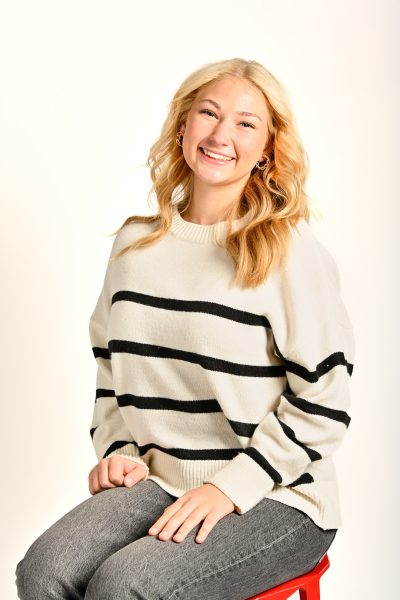History proves that fashion is cyclical, but no one could have prepared modern society for the return of fatphobia, diet pills and glorified starvation. Yet, here we are, allowing social media feeds to resurrect the 1990s and early 2000’s toxic obsession with being thin.
People belonging to all genders and ages have been targeted by beauty standards for centuries. Point Park students, as if not already stressed enough navigating academic burnout and climate anxiety, now must deal with the societal influence to appear filtered and edited. Even worse, students within the Conservatory of Performing Arts also face the performance industry’s complicated history with body image.
Across generations, women have been specifically expected to modify their appearance to whatever the time period demands. The flappers in the 1920s wanted long, slim limbs. The models of the 1950s were expected to have an hourglass figure, with tiny waists and perky busts. By the 1990s, “Heroin Chic” ruled runways. This was a time when being “thin enough” was the price of visibility and when eating disorders were joked about in sitcoms.
The revival of the thin aesthetic is not just the return of some quirky trend such as low-rise jeans. This is a full cultural regression. The worst part is how influencers have glamourized this diet-culture.
Falling under the marketing scheme of “self care,” the internet praises insidious terms such as “gut health,” “clean eating,” or “wellness journey.” On TikTok or Instagram Reels, trends like “almond moms” or “what I eat in a day” videos rack up millions of views. Celebrities are proudly opening about using weight loss medications created solely for the health of diabetes patients. “Calorie Deficits,” encourage individuals to eat 1,200 calories a day, less than the nutritional needs of a toddler. “Gymfluencers” push hyper-disciplined routines. Intermittent fasting is a praised lifestyle, morning detoxes are a necessity and monthly juice cleanses are a no-brainer.
Regardless of the effectiveness of these techniques, each one further enforces that your body is a problem that constantly needs to be worked on. Ultimately, this fuels disordered eating, body dysmorphia and destroys one’s mental health. The thin ideology thrives off insecurity, and directly links an individual’s value to their size.
What’s often left out of this conversation is how drastically different food and lifestyles are from past decades. We’re living in a completely different world with evolving science. Humans have access to more food, more understanding of genetics and less laboring jobs. This should insinuate for more awareness around health at every size.
My personal connection to this matter goes beyond just being an eighteen year-old girl who is susceptible to media influence. Here at Point Park, I am a dance major. In the School of Dance, the professors are typically very supportive and actively work to foster a healthier environment that represents individuality.
Despite the encouragement we consistently receive, my peers and I are not immune to external noise. We stare at ourselves in a mirror all day, with the intention of finding technical issues within our dancing. Admittedly, it is easy to transition from observing imperfections in style and form and instead identifying bodily imperfections. The culture of dance has trained us to think and compare. With that comes the urge to shrink ourselves into outdated molds.
As a dancer, I will always be overly critical of my body, constantly working to be in an unattainable place of skinny yet strong. As a woman, I must meet beauty standards to be successful and relevant. I am expected to be confident and embrace who I am while constantly working to become someone I am not. I will never win.
I open up on this matter to show that no one is alone. Mental health issues involving an individual’s relationship with food can be debilitating and in some cases deadly. While health and wellness is important, the media is deceiving young people to believe that weight determines worth. Society cannot go backwards. I encourage everyone to contribute to making the difference by supporting all body types.





